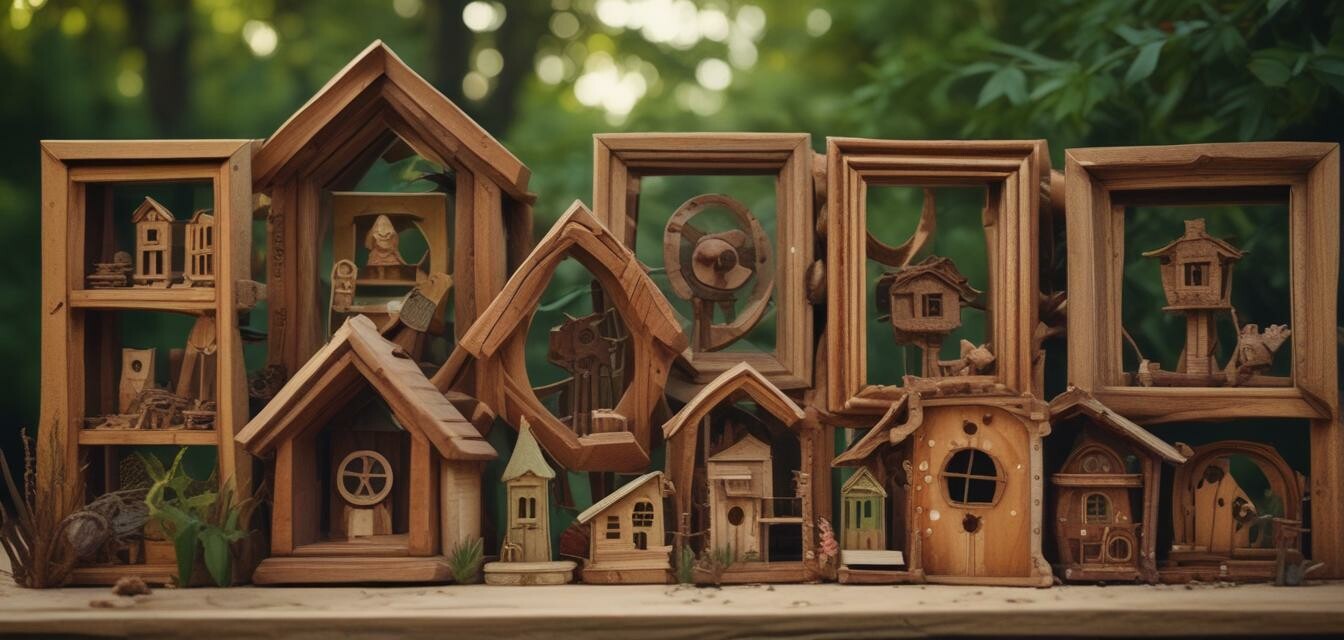
How to reuse scrap wood in creative projects
Key Takeaways
- Reusing scrap wood helps reduce waste and promotes sustainability.
- Creative projects can add unique decor pieces to your home.
- There are numerous ways to utilize scrap wood, from furniture to crafts.
- Proper care and maintenance can extend the life of your wooden projects.
- Engaging in wood projects can be a fun activity for families.
If you enjoy woodworking or crafting, you likely have leftover scrap wood lying around. Instead of throwing it away, consider how you can creatively reuse it in various projects. Not only does reusing scrap wood help promote sustainability, but it also allows you to create unique items that can enhance your home decor or even serve functional purposes. In this article, we'll explore different ideas for utilizing scrap wood, helping you recognize its potential and inspire your next project.
Why reuse scrap wood?
Scrap wood can often end up in landfills, contributing to environmental issues. By choosing to reuse it, you play a part in reducing waste and conserving resources. Additionally, reusing scrap wood can:
- Provide a cost-effective way to source materials for projects.
- Encourage creativity and innovation in crafting and woodworking.
- Help you develop new skills in woodworking and design.
Creative project ideas using scrap wood
Here are some exciting and useful ideas for repurposing your scrap wood:
1. Rustic picture frames
Create beautiful, rustic picture frames from scrap wood to display your favorite photos.
2. Birdhouses
Construct charming birdhouses that can attract wildlife to your garden while giving those old pieces new life.
3. Shelving units
Build simple yet stylish shelves for your home, which can serve as storage or display space.
4. Planters
Turn scrap wood into unique planter boxes that can house your favorite plants while adding character to your space.
5. Coasters
Cut and sand old wood pieces into coasters to protect your surfaces and save the environment.
6. Wall art
Get creative by making intricate designs and patterns to hang on your walls, showcasing your artistic flair.
7. Furniture accents
Use scrap wood to create small furniture pieces or add unique accents to existing furniture, giving your home a personal touch.
A step-by-step guide to creating a simple scrap wood project
Let’s take a closer look at making a rustic picture frame:
Materials needed:
- Scrap wood pieces
- Wood glue or nails
- Saw (hand saw or miter saw)
- Sanding paper
- Wood finish or paint (optional)
Instructions:
- Cut the scrap wood to your desired size for the frame.
- Arrange the pieces to form the frame and secure them with wood glue or nails.
- Sand the edges to create a smooth finish.
- If desired, apply a wood finish or paint for an added touch.
- Insert your photo, and the frame is ready to hang!
Maintaining your scrap wood projects
To ensure your recycled projects last long, here are some tips for maintenance:
- Regularly dust your wooden items to keep them clean.
- Apply a coat of wood polish periodically to restore shine.
- Store items away from direct sunlight to prevent warping or fading.
- Avoid excessive moisture, as it can damage wood over time.
Tips for beginners
- Start with small projects to build your confidence.
- Always wear protective gear while working with tools.
- Don’t be afraid to experiment with different designs!
- Use online resources or workshops to learn new techniques.
Conclusion
Reusing scrap wood is not only an eco-friendly practice, but it can also be a source of joy and creativity. By engaging in these projects, you can add character to your home and take pride in knowing that you are contributing to sustainable practices. If you're looking for more tips on wood projects or sustainable practices, be sure to explore our blog for more information on buying guides and wood finishing products. Embrace the beauty of reusing wood and let your creativity shine!
Pros
- Reduces waste and promotes sustainability.
- Allows for creative expression.
- Cost-effective option compared to buying new materials.
- Can teach valuable woodworking skills.
Cons
- Some projects may require specific tools and skills.
- Quality of the wood may vary, affecting project durability.
- Time-consuming process for beginners.